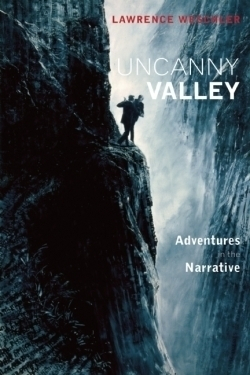Uncanny Valley
Adventures in the Narrative
Imagine the journalist’s life: immersed in experience, on intimate terms with one’s subject, embarked on multiple and continuous journeys of discovery, and then asked to explain it all to a distractible audience. This is Lawrence Weschler’s charge, and he does it with grace. Grace, it turns out, is essential to his project, as becomes clear in Uncanny Valley, a collection of his best narrative nonfiction.
Most readers will know Weschler for his award-winning visual arts magazine coverage and books—Mr. Wilson’s Cabinet of Wonder, Seeing is Forgetting the Name of the Thing One Sees, or Everything That Rises: A Book of Convergences. In Weschler’s worldview, everything is connected. He explains, for example, how computer animators use mathematical formulas to depict a convincing glass of milk while he draws on the wisdom of medieval mystics.
That type of unlikely connection is essential to the entire collection. Creating an animated human face, for instance, is something like creating the soul—a divine endeavor. But the more one labors to get close to the divine, the farther away one gets. Better to stand back a little, take a leap of faith, and note the mysteries encountered along the way. Whether one is making art or international human rights legislation, “You work and you work and you work at something that then happens all by itself,” he writes. And isn’t that amazing?
These essays cover a range of topics: art-making, human rights, and coincidence. One reports on the intricate process by which 162 nations addressed 1,300 of the most difficult issues associated with creating the International Criminal Court. In the end, the Court’s creation is all things at once: a triumph, a baby step, a wonder.
Weschler’s prose is deceptively, beautifully simple. His questions about the nature of things are informed with theology and poetry, but remain accessible. He’s the kind of guy who goes to see Donald Judd’s series of concrete cubes in Marfa and is amazed by a nearby ant laying straws together in a way that looks like art. Who influenced who, he wonders, “was the ant simply God … or what?”
The impact of his craftsmanship is exactly what computer animators aim for: “Be amazed, but don’t notice.” No matter the subject, Weschler goes after its mystery. He illuminates underpinnings, pointing out the existence of things like Shrek’s precisely thrumming uvula, the one that mathematicians have placed there but that moviegoers will never, ever see.
Reviewed by
Teresa Scollon
Disclosure: This article is not an endorsement, but a review. The publisher of this book provided free copies of the book to have their book reviewed by a professional reviewer. No fee was paid by the publisher for this review. Foreword Reviews only recommends books that we love. Foreword Magazine, Inc. is disclosing this in accordance with the Federal Trade Commission’s 16 CFR, Part 255.

